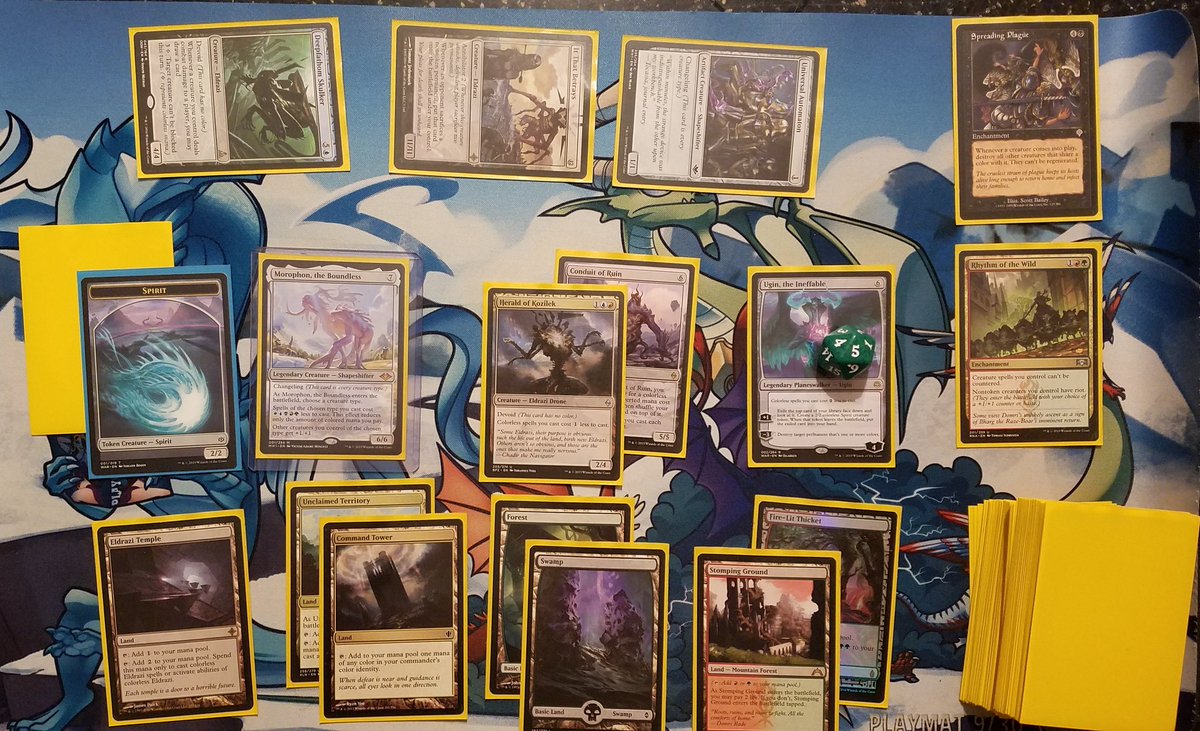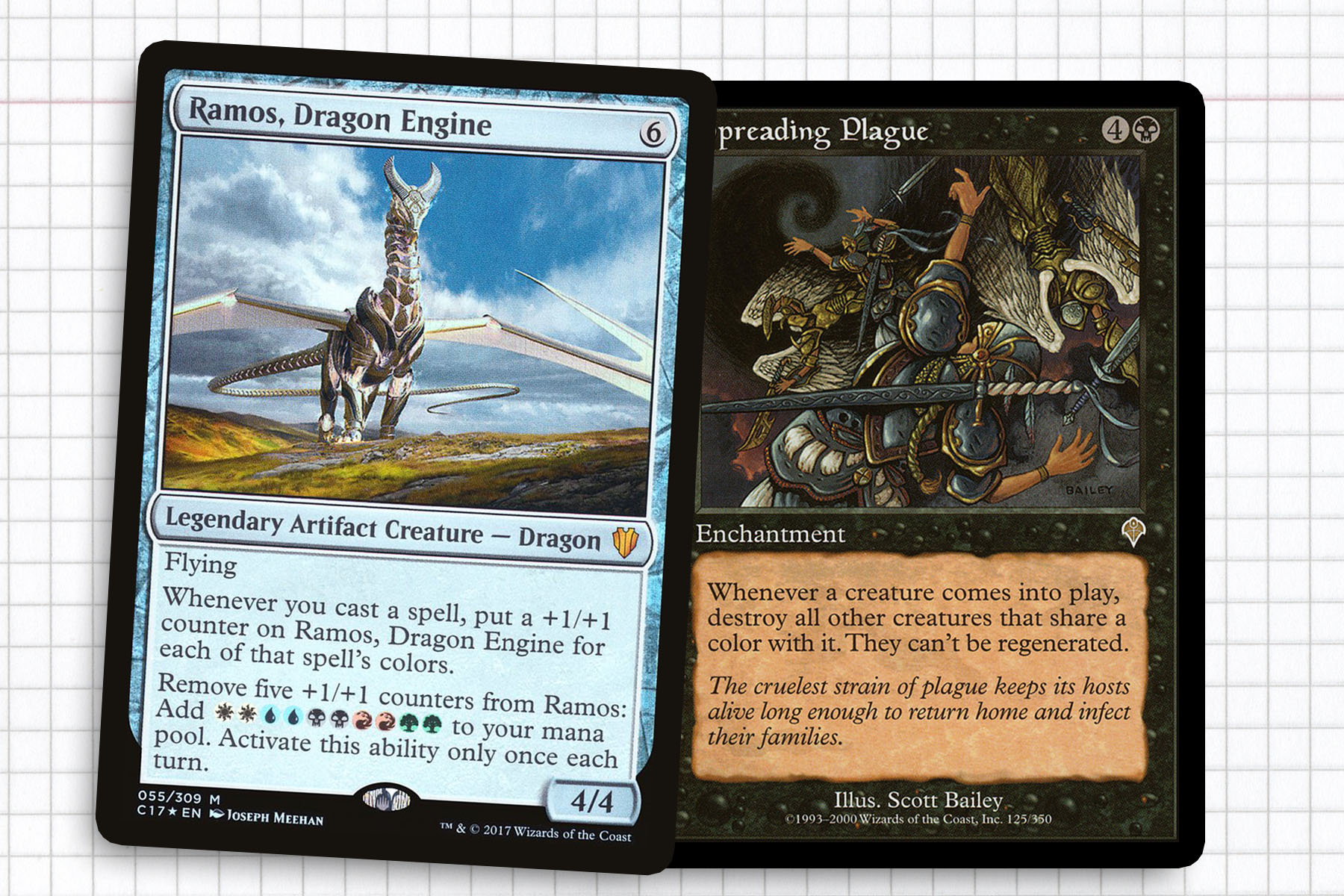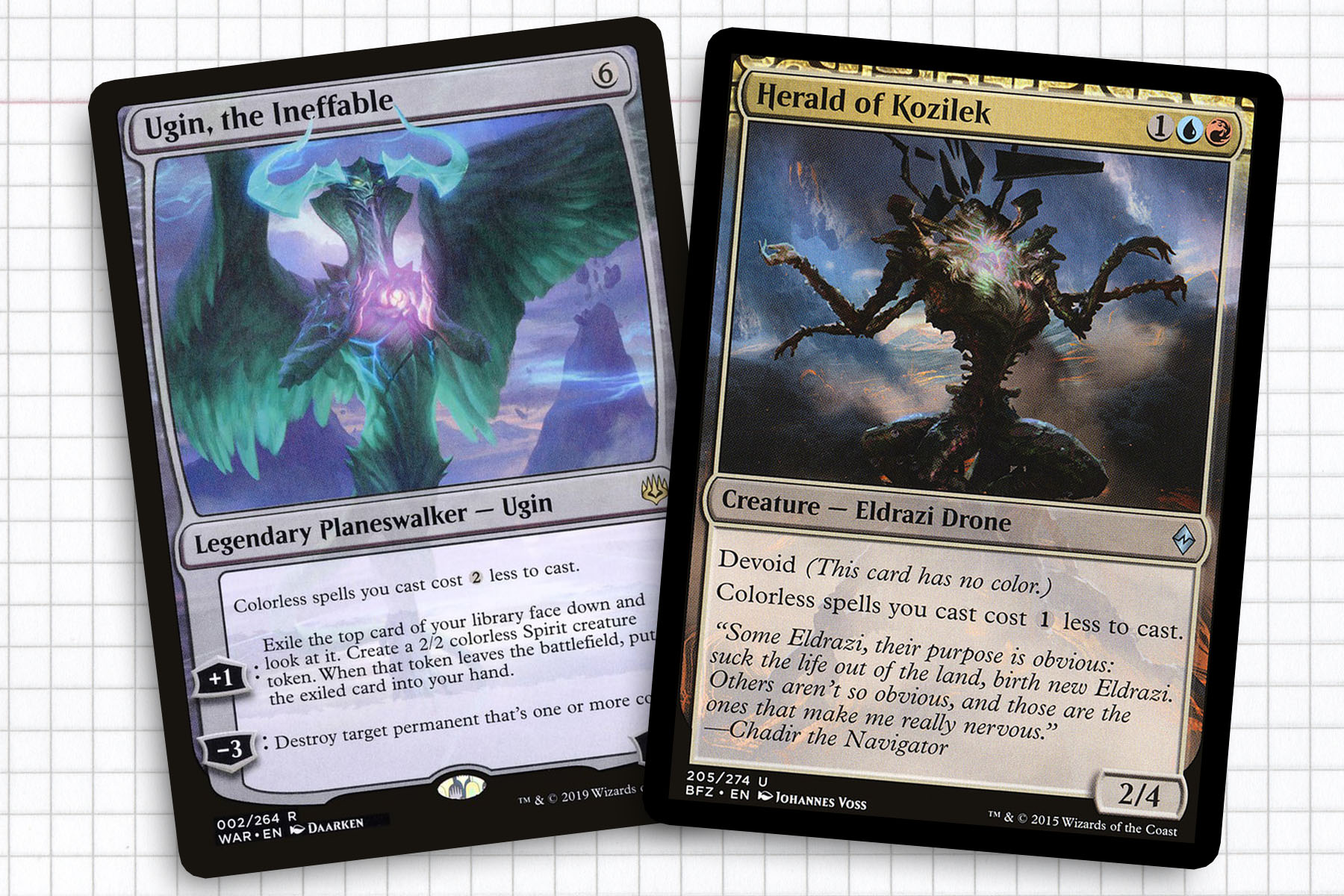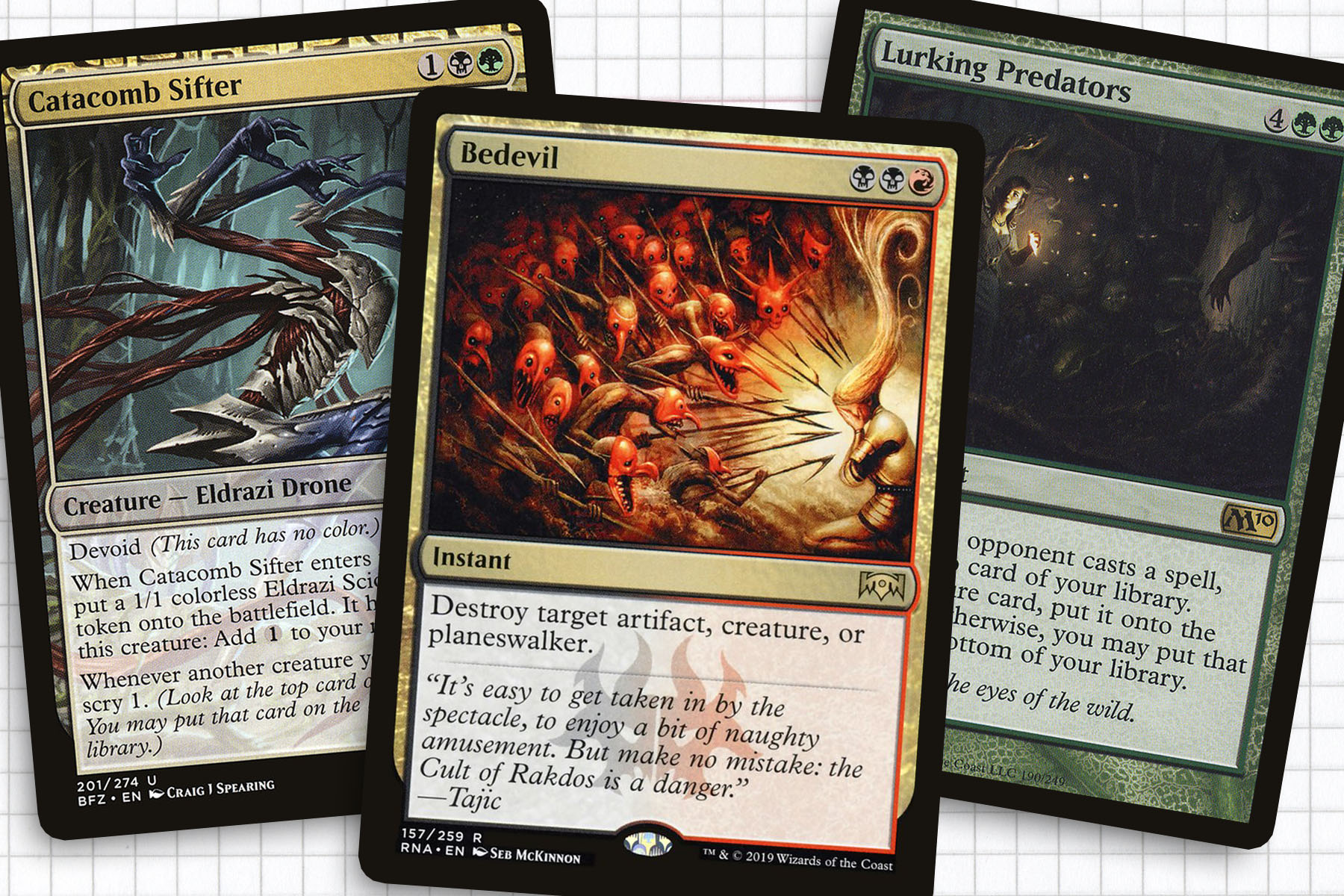My Shattergang Brothers deck has run the full gamut, from being something I loved, to something I no longer recognized, and back to love again. The general look and feel of the deck is similar to what I had written about in 2017, a Jund deck that’s main theme was being colorless through its use of Eldrazi. As time went on, I tried making it a Yidris, Maelstrom Wielder deck. I thought adding another color would add to the power level and my own enjoyment, but over time I felt foolish for making that swap.
After all the time I invested, the Jund version had transcended the cardboard and become something deeply personal to me. The lands, creatures, art, and even the sleeves were something greater than the sum of all the parts. To an outside observer it probably sounds crazy, but I didn’t realize what I had until I changed the deck. Once I did, I immediately realized I had no choice but to change it back. But Magic is a game of change. It should be no surprise then that change would strike when I least expected it, Modern Horizons.
I’ve been down this road before—something looking promising, but not enough. Even when Morophon, the Boundless was previewed and a few people pointed to it as a funny general to lead the Eldrazi, I didn’t take it seriously. But something about the legendary changeling captured my ambitions enough that I acquired a few copies in case it ever became useful for some random tribe.
For a night, curiosity struck and I subbed Morophon for Shattergang Brothers without changing anything else. Then I put in a few Eldrazi with non-Jund color identity. Then I all but swore off Shattergang Brothers, and added single copies of Plains and Island. I haven’t looked back.

I changed 8% of my deck, and it altered the makeup of the deck so much that it redefined all the qualities I love about it. At the same time, the upper limits surpassed what I had hoped the Yidris version could be. Morophon is a colorless, tribal lord who offers mana reduction akin to The Ur-Dragon!
I’ve fallen in love with a deck I thought I’d already fully explored. It’s hard to fully explain how Morophon could have such an effect, but this week I’d like to take make an attempt at putting my gut feelings to the written text.

Five Color Without Being Colored
Over the evolution of this deck, what started out as trying to capture as many of the smaller Eldrazi as possible turned to highlighting the brood; complemented by as many weird effects as I could find in the Jund color identity, like Gleancrawler or Immobilizer Eldrazi. One of the niche effects that I eventually grasped onto was taking advantage of the colorless nature of Eldrazi, by granting my team fear or intimidate as near unblockability and later finding Spreading Plague as a disproportionate board-clearing effect. After that, except for some rare utility creatures, I was moving to make all of my creatures colorless.
The one thing that was always holding Shattergang Brothers back was that it died to things like All is Dust or Spreading Plague. The cost of recasting my general became a real tax on the deck. I wanted this deck to take full advantage of colorlessness, but didn’t want to be limited to an Eldrazi titan as my general. That route would have left me missing out on all the Eldrazi that required some form of colored mana and all the unique effects I learned to love from around the color pie.
Morophon provides the perfect answer: a colorless legendary creature that has the entire color pie at its disposal, but that plays friendly with the Eldrazi in ways a similar general like Ramos, Dragon Engine never could.

General at a Discount
Unlike most Eldrazi decks I have seen over the years, I actually have a high saturation of Eldrazi that require some colored mana to cast. Morophon does a great job and pairs well with all the other ways to discount colorless spells like Urza’s Incubator, Eye of Ugin, Ugin, the Ineffable, and now Herald of Kozilek. Morophon discounts the colored part of mana costs, while the others reduce the colorless part. By extension, Morophon—as a changeling—also takes advantage of these discounts, something my trusted Shattergang Brothers never could. In the games played thus far, this has meant that I can often drop dozens of mana worth of creatures at a moment’s notice for little to no mana. That’s put a spell like Distant Melody on my radar to refill my hand.
Morophon also addresses a bit of a personal embarrassment for myself. With most of my Commander decks, the general is a key piece and often something I envision the deck cannot work without. This wasn’t true of the Shattergang Brothers, almost to a fault. I can think of games that I was shuffling up afterwards and playing the game over in my head. Suddenly, I would realize that the clearest path to victory was actually using one of Shattergang’s sacrifice abilities to thin my opponents’ resources. For better or worse, I think Morophon, the Boundless is going to be a general that improves my game by being on the battlefield, similar to how The Ur-Dragon can massively improve the dragons within its deck.

Still Jund at Heart
As I alluded to before, I have changed very little about the structure of this deck. I’ve only added seven cards that could not have been there before: Eldrazi Displacer, Deepfathom Skulker, Prophet of Distortion, Herald of Kozilek, Distant Melody, a Plains, and an Island. Even with such a small amount of change to this deck, I could not be happier with the results.
It was hard at the time to quantify what didn’t work about the Yidris build, as most of what I have done here could have been present in that deck. With some time away to think back on those games, the biggest issue was that I was leaning much more on the extra color identity and splitting my mana base to the point where it became hard to cast spells. For a deck that needs to cast Yidris and attack, that was a problem.
My ideal Eldrazi deck is a Jund deck that leans into some of the same space as Standard Jund—a flexible and powerful midrange deck—but in less conventional ways. So in porting this deck over from what it was to what it is now, I had no desire to change much. The mana reduction from my general is enough that I don’t need white or blue mana sources to cast the small pocket of non-Jund cards, while also allowing my general to be a lord and improve all of my Eldrazi.
The funniest part to me is that for a deck looking to cast five colors of spells, I have not had to change my mana sources much at all. I already had Darksteel Ingot, Command Tower, Corrupted Crossroads, Unclaimed Territory, Grand Coliseum, and Ash Barrens, and those cast the White and Blue spells I have if I don’t happen to have Morophon on board yet. The end result is a deck that can be whatever it wants to be, while also have that strange flavor I had been looking to capture for the last four years.
Long time readers will know that this will not be the last time I talk about this deck. It is my most consistent and evolving narrative. But my hope is that this is part of the final form the deck will take. While I fought against adding more to the color identity in the past, I believe Morophon’s entire card fits the deck. It is an Eldrazi lord, while also being colorless. It has the part of The Ur-Dragon I envied, while still being something other players can interact with. That gives the deck the dynamic push to be as iconic as possible.
Ryan Sainio is a Graphic Designer who writes about EDH and the EDH community. He has been playing Magic: The Gathering since 7th Edition in 2002 and values flavorful and fun gameplay over competitively optimized decks.

